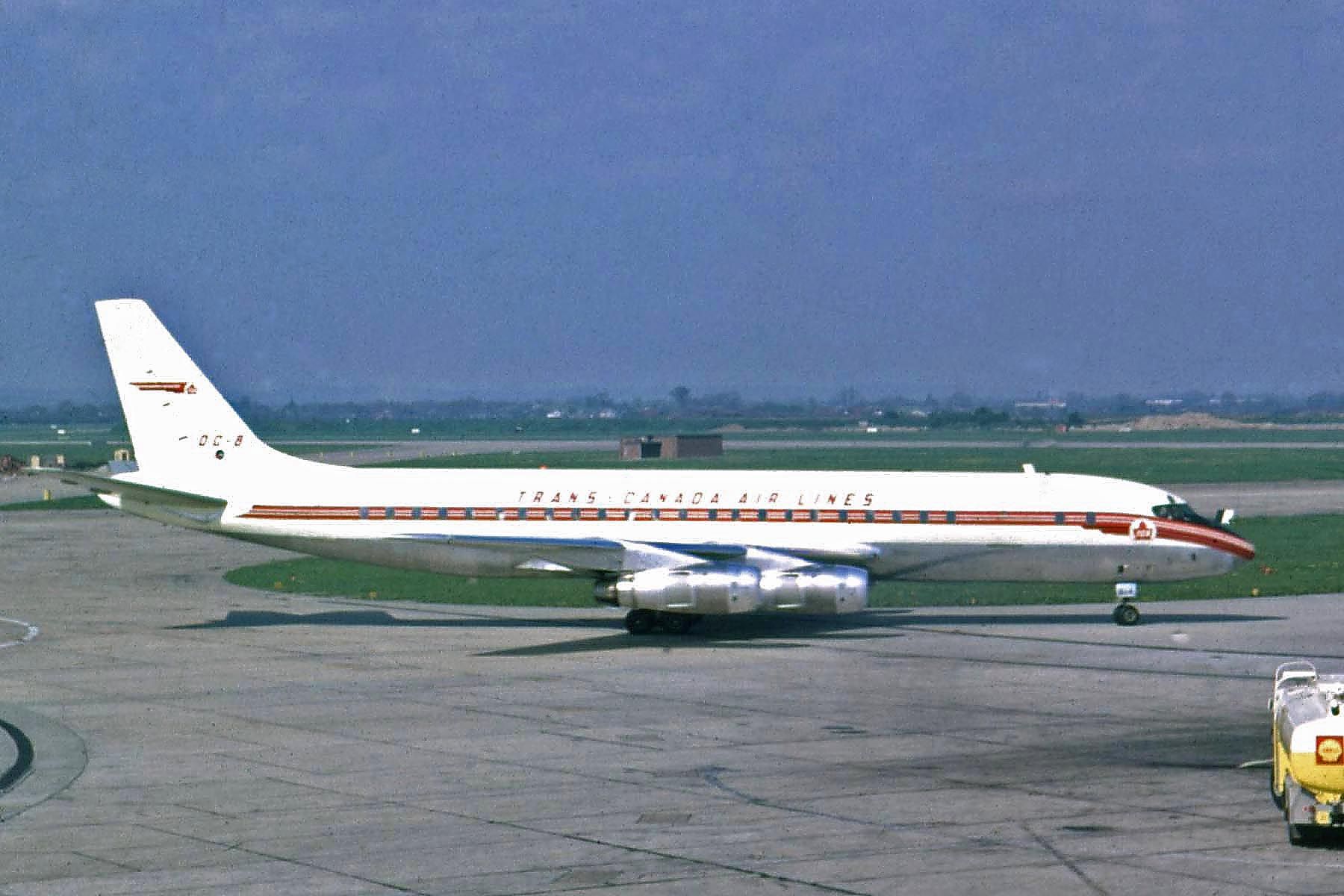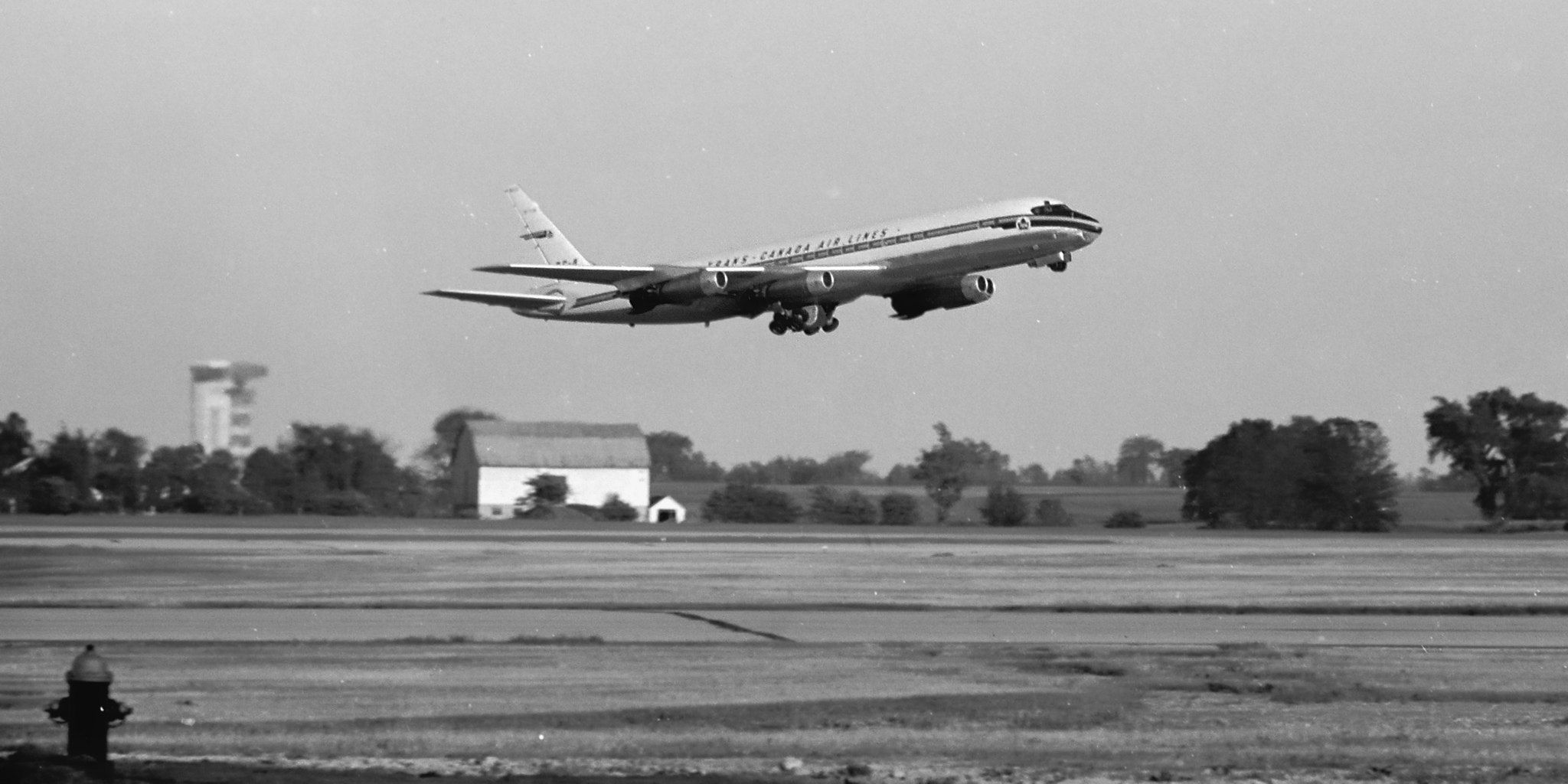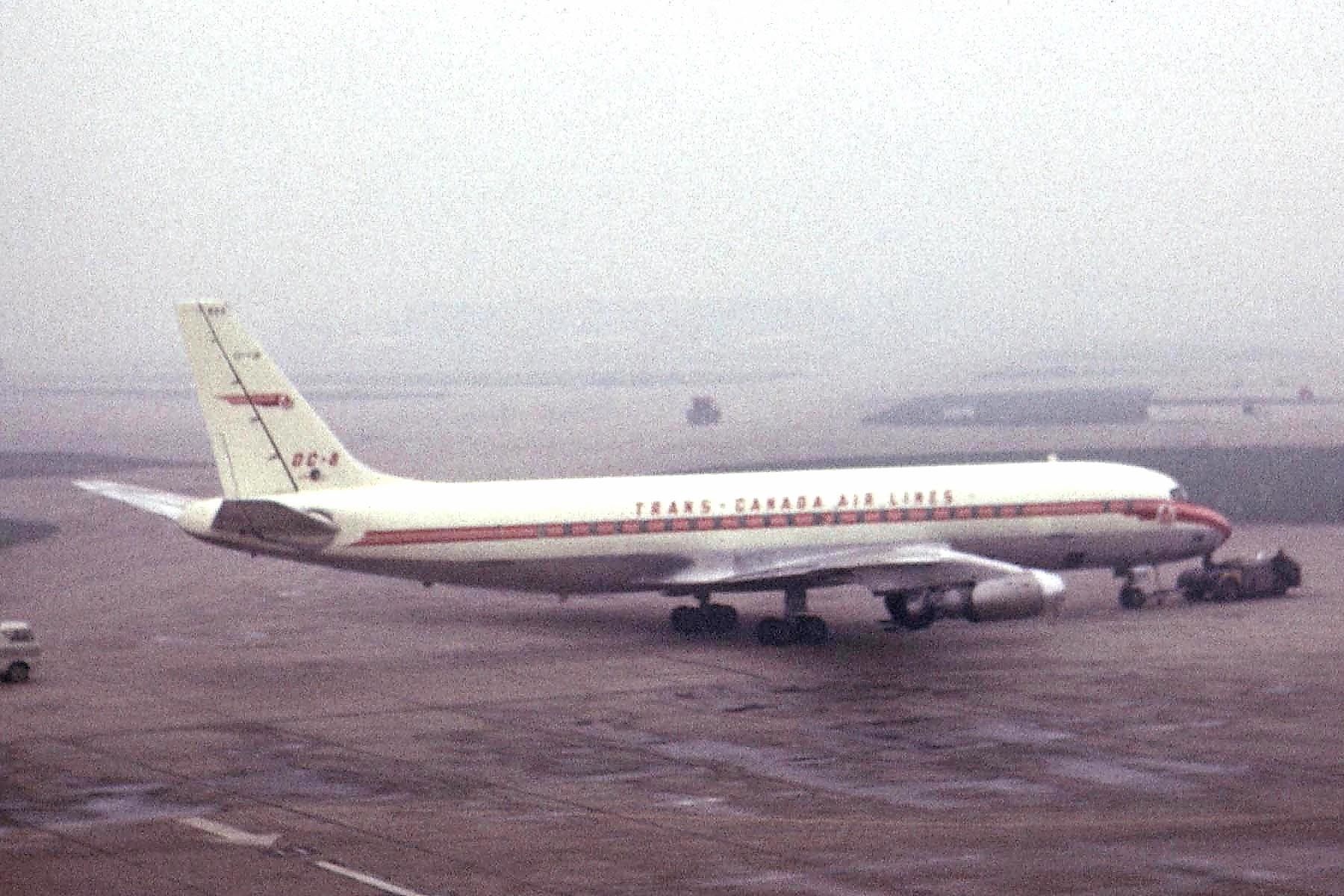Trans-Canada Flight 831 was a regular scheduled flight from Montreal to Toronto. The flight on November 29th, 1963, was operated by a Douglas DC-8 aircraft, and after a delay in departure, it took off at 18:28 from Runway 06R at Montreal-Dorval Airport. Five minutes later, the aircraft crashed, resulting in the deadliest crash in Canadian history at that time. This is the story of Flight 831.
Trans-Canada Flight 831
The weather on the evening of the crash was overcast, with light rain and fog, visibility of four miles, and a North-easterly wind of 10 knots. 118 people were onboard the aircraft, comprising 111 passengers and seven crew members. After clearing 3,000 feet, the flight crew received clearance for a left turn to St. Eustache. No further contact was received from the aircraft. After deviating from its flight path, it descended rapidly and hit the ground around 17 miles (27 km) north of Montreal at a speed of between 470-485 knots.
The Douglas DC-8 crashed in a field near Ste-Thérèse-de-Blainville and left a crater, leaving debris spread across a large area. Heavy rain over the previous days had created challenging conditions for rescue workers to access the crash site.
No survivors were found, and the aircraft had completely disintegrated, making it difficult for investigators to find evidence of the cause of the crash.
Investigation and possible cause of the crash
Due to the aircraft's disintegration on impact and the terrain where it crashed, the recovery teams were still working well into 1964. The Department of Transportation concluded the investigation in 1965, and the report was published in June of that year. However, no definitive cause was established. The aircraft was too severely damaged; at that time, voice cockpit recorders and flight data recorders were not required on Canadian aircraft.
The investigators believed that the flight crew applied the near maximum available Aircraft Nose Down Trim to the horizontal stabilizer. This resulted in the aircraft descending at such a speed that the hydraulic stabilizer motor stalled, resulting in an impossible situation for the crew to recover.
Three possible causes for the actions of the crew were put forward. The first was a possible icing of the pitot tubes, leading the crew to take corrective action. The second was a failure of a vertical gyro, with evidence that it was possible to have such a failure without a corresponding warning. However, the aircraft had the necessary standby equipment that would have helped the crew to understand the situation thoroughly and take corrective action, but this cause was deemed possible.
It was concluded that the cause was likely to have been related to the pitch trim system and the crash of Eastern Air Lines Flight 304 was in their minds, as it crashed three months later in similar circumstances. The crew's actions were caused by an unprogrammed extension of the Pitch Trim Compensator. This was deemed the most likely cause but was not definitively confirmed.
Get all of the latest aviation history stories here.
Legacy of Flight 831
The crash of Flight 831 is not particularly well remembered, but it did result in a meaningful legacy. There are several possible reasons why it is not well remembered. Firstly, the timing of it, as it was just one week after the assassination of President John F. Kennedy. There were very few witnesses to the crash, as it happened at night, and it was so destructive that the aircraft disintegrated, leaving very little discernible physical evidence. The fact that the cause was never fully established may have contributed to the disaster not receiving the attention it deserved.
However, the crash sparked the requirement for flight data recorders on aircraft.
This is now the third-worst air disaster in Canada. Swissair Flight 111, which crashed off the coast of Nova Scotia in 1998, and Arrow Air Flight 1285, which crashed in Newfoundland in 1985, were more deadly than Flight 831.
There is a memorial garden at the crash site, created by Trans-Canada Air Lines. The airline eventually morphed into Air Canada, and in a break from convention, they did not retire flight number 831 until many years later.



